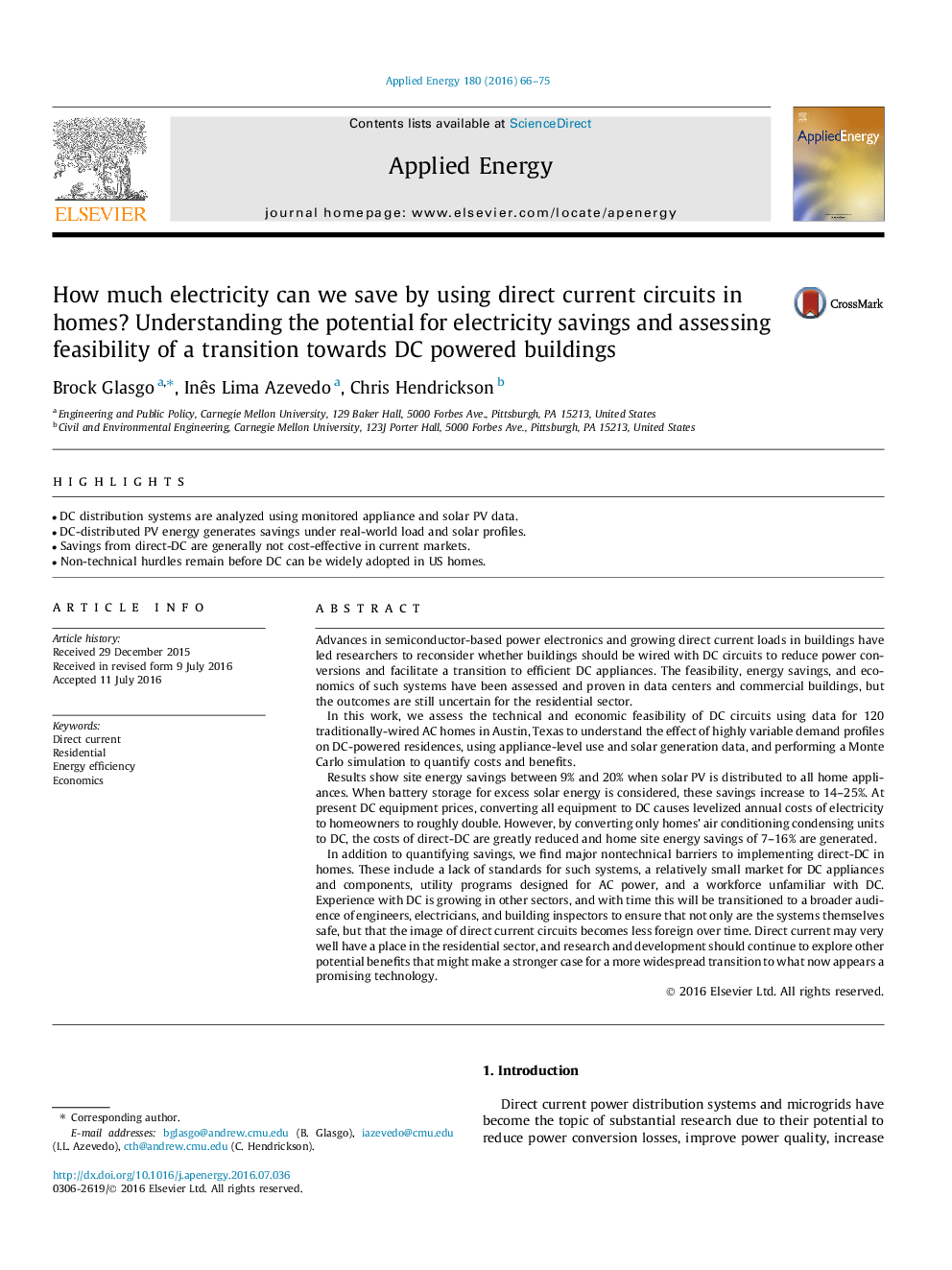| کد مقاله | کد نشریه | سال انتشار | مقاله انگلیسی | نسخه تمام متن |
|---|---|---|---|---|
| 242439 | 501845 | 2016 | 10 صفحه PDF | دانلود رایگان |

• DC distribution systems are analyzed using monitored appliance and solar PV data.
• DC-distributed PV energy generates savings under real-world load and solar profiles.
• Savings from direct-DC are generally not cost-effective in current markets.
• Non-technical hurdles remain before DC can be widely adopted in US homes.
Advances in semiconductor-based power electronics and growing direct current loads in buildings have led researchers to reconsider whether buildings should be wired with DC circuits to reduce power conversions and facilitate a transition to efficient DC appliances. The feasibility, energy savings, and economics of such systems have been assessed and proven in data centers and commercial buildings, but the outcomes are still uncertain for the residential sector.In this work, we assess the technical and economic feasibility of DC circuits using data for 120 traditionally-wired AC homes in Austin, Texas to understand the effect of highly variable demand profiles on DC-powered residences, using appliance-level use and solar generation data, and performing a Monte Carlo simulation to quantify costs and benefits.Results show site energy savings between 9% and 20% when solar PV is distributed to all home appliances. When battery storage for excess solar energy is considered, these savings increase to 14–25%. At present DC equipment prices, converting all equipment to DC causes levelized annual costs of electricity to homeowners to roughly double. However, by converting only homes’ air conditioning condensing units to DC, the costs of direct-DC are greatly reduced and home site energy savings of 7–16% are generated.In addition to quantifying savings, we find major nontechnical barriers to implementing direct-DC in homes. These include a lack of standards for such systems, a relatively small market for DC appliances and components, utility programs designed for AC power, and a workforce unfamiliar with DC. Experience with DC is growing in other sectors, and with time this will be transitioned to a broader audience of engineers, electricians, and building inspectors to ensure that not only are the systems themselves safe, but that the image of direct current circuits becomes less foreign over time. Direct current may very well have a place in the residential sector, and research and development should continue to explore other potential benefits that might make a stronger case for a more widespread transition to what now appears a promising technology.
Journal: Applied Energy - Volume 180, 15 October 2016, Pages 66–75